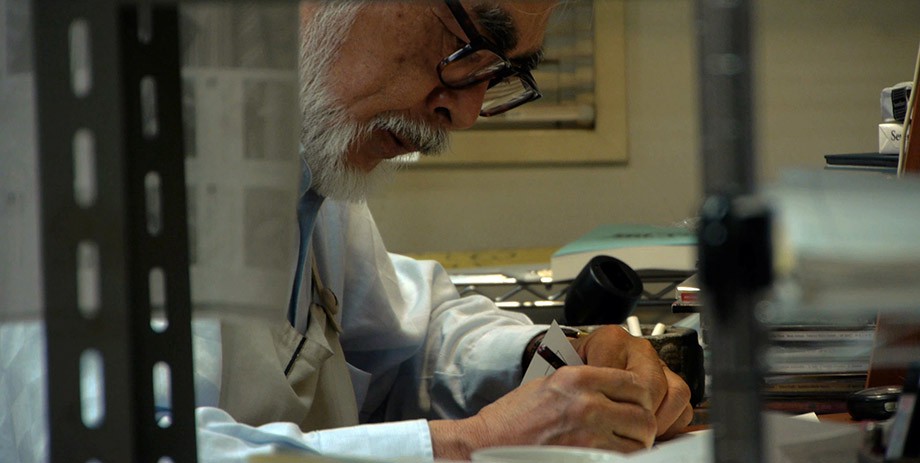Mami Sunada was born in Tokyo
and studied documentary filmmaking at Keio University. She broke into film by assisting director Hirokazu Kore-eda on Still
Walking and Air Doll. She also wrote and directed Death of a Japanese Salaryman. (TIFF official site)
Her latest film, The
Kingdom of Dreams and Madness, played at TIFF.
WaH: Please give us your description of the
film playing.
MS: Studio Ghibli, a nationally
recognized studio in Japan, was in a state where two films, The Wind Rises and The Tale of Princess Kaguya, were being directed by Hayao Miyazaki and Isao Takahata during the same year. This was very unusual, and thus a memorable
event that both were in production at the same time. Since I was granted
such rare access for this documentary in such a busy year, I was able to
capture many of the details of the studio’s production process.
WaH: What drew you to this story?
MS: This project started off as
a request from Disney Japan to make a commercial DVD, but as soon as I started
going to Studio Ghibli, I realized that in order to depict the studio in a
comprehensive manner, it should be done as a feature film instead. I had
the intuition that this would be a historic year for Studio Ghibli, so I
thought, rather than just having a video to promote it, I wanted to give a more
in-depth glimpse at the daily operations within the legendary studio.
WaH: What was the biggest challenge in
making the film?
MS: There were three major
obstacles for me to overcome before I could get the access I needed to Studio
Ghibli. The first was producer Mr. Suzuki, who initially was reluctant to
agree to the approaches I suggested. It was only when I said I wanted to
make this into a documentary feature film that he gave me his support, and only
with the condition that I approach directors Miyazaki and Takahata myself.
Mr. Miyazaki was right in the middle of production for The Wind Rises, so it was hard to find
the time to start really filming him. I went daily to see how he worked
and to figure out how best to approach him. Mr. Takahata was even more
difficult. If Miyazaki was Mount Fuji, then Mr. Takahata was Mount
Everest. With the release date for the documentary looming, I had no
choice but to overcome these difficulties on a tight deadline.
WaH: What do you want people to think about
when they are leaving the theatre?
MS: Regardless of the audience’s
interest in animation, I would hope that they leave the theatre with an
appreciation for the value of consistent, hard work. These three
animation filmmakers show how difficult it is to actually finish these
projects, and how the result of repeating quality work every day can be
something really incredible.
WaH: What advice do you have for other female
directors?
MS: Actually, I would like get
advice from other female directors! It’s still early in my career, but so
far what I have learned is that female filmmakers need to really focus on
patiently and persistently explaining their vision to producers.
WaH: How did you get your film funded?
MS: At first, we had no
production funding set up at all, so both Mr. Suzuki and Mr. Miyazaki at Studio
Ghibli were concerned about how I was funding myself and the project. They helped set me up with Mr. Nobuo Kawakami, who is the head of
Dwango Co. and was a producer on this film, and he ultimately ended up funding
the film via Dwango.
WaH: Name your favorite woman-directed film
and why.
MS: Open Hearts directed by Susanne Bier in 2002. It’s a fully realized work of
entertainment, but it also shows what it means to be human. It very
delicately shows the loneliest parts of life, as well as the inner and outer
aspects of people.






